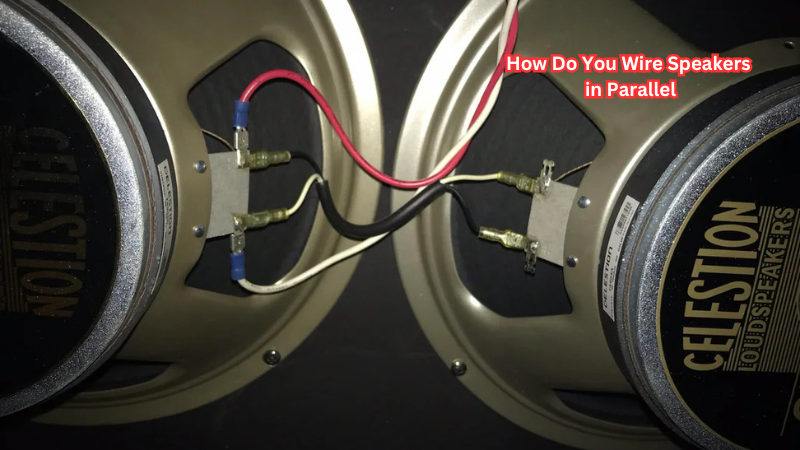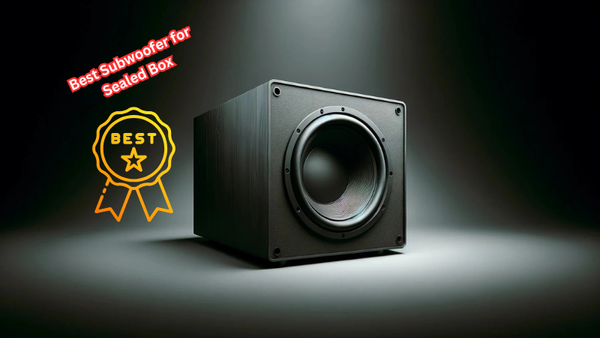Wiring speakers in parallel is a popular method for enhancing your audio setup, offering balanced sound distribution and optimal performance. This technique involves connecting the positive terminals of all speakers and the negative terminals, allowing them to share the same electrical path.
Wiring speakers in parallel allows you to maintain consistent voltage across each speaker, creating a unified and immersive listening experience. However, understanding impedance and ensuring compatibility with your amplifier is essential to prevent potential damage or performance issues.
Whether upgrading your home theater system or setting up a professional audio rig, learning how to wire speakers in parallel ensures you achieve exceptional sound quality without compromising the safety or efficiency of your equipment.
What is the Phenomena of Impedance in Speakers
Impedance refers to the resistance an electrical circuit offers to the current flow. In simple terms, it determines how much power a speaker can handle and how it will affect the overall performance when connected to an amplifier.
Most speakers have a nominal impedance rating, typically 4, 8, or 16 ohms, representing their average resistance over a range of frequencies. However, as music is dynamic and contains various frequencies, the impedance of speakers may fluctuate depending on the type of music being played.
Understanding impedance is essential for wiring your speakers in parallel correctly. Connecting two or more speakers with different impedance levels in parallel will result in an overall impedance value lower than the individual speakers. This decrease in resistance can overload your amplifier and cause distortion, overheating, or even damage to your equipment.
Benefits of Wiring Speakers in Parallel
Wiring speakers in parallel offers several benefits, making it a popular choice for audio enthusiasts. Some of the advantages include:
- Improved Sound Quality: By connecting multiple speakers in parallel, you can distribute power evenly across all speakers, resulting in a balanced sound and enhanced audio performance.
- Increased Power Handling: As impedance decreases when wiring speakers in parallel, your amplifier will output more power to maintain the same voltage level. This allows for higher volume levels and improved bass response without straining your equipment.
- Flexibility and Expandability: Parallel wiring provides flexibility as it allows you to add additional speakers or change the setup without major modifications. It also enables you to mix and match different types or brands of speakers, making it perfect for customizing your audio setup.
- Cost-Effective: When compared to wiring speakers in series, parallel wiring requires fewer speaker cables and potentially a less powerful amplifier. This can save you money while still achieving excellent audio quality.
How to Wire Speakers in Parallel
Now, let's dive into the steps of wiring speakers in parallel. Note that this process is for connecting multiple speakers to one amplifier. If you want to connect one speaker to multiple amplifiers, the process will be slightly different.
Step 1: Gather Your Materials
Before starting, make sure you have all the necessary materials on hand:
- Speakers (2 or more)
- Speaker wire
- Wire cutters/strippers
- Screwdriver or pliers
- Amplifier
Step 2: Determine Speaker Impedance and Amplifier Compatibility
As mentioned earlier, understanding impedance is crucial for wiring speakers in parallel. Check the nominal impedance rating of your speakers and ensure they match your amplifier. If the speaker impedance is lower than the minimum specified by your amplifier, do not proceed with parallel wiring.
Step 3: Identify Positive and Negative Terminals
Each speaker has two terminals - positive (+) and negative (-). It is essential to identify which terminal is which before wiring them in parallel. The positive terminal usually has a red dot or a plus (+) symbol next to it, while the negative terminal may have a black dot or minus (-) symbol.
Step 4: Strip Speaker Wires
Using wire cutters/strippers, strip off one inch of insulation from both ends of the speaker wires. Also, make sure to twist the strands of each wire together to prevent them from fraying.
Step 5: Connect Positive Terminals
Take one speaker wire and connect it to the positive terminal of your first speaker. Then, connect the other end of the same wire to the positive terminal of your second speaker. Continue this process for all speakers you want to wire in parallel, connecting all their positive terminals with a single wire.
Step 6: Connect Negative Terminals
Using another speaker wire, connect the negative terminal of your first speaker to the negative terminal of your second speaker. Repeat this step until all negative terminals are connected with a single wire.
Step 7: Connect to Amplifier
Take the two wires coming from the positive and negative terminals of your parallel speakers and connect them to the positive and negative output terminals of your amplifier, respectively. Make sure to use the appropriate connectors (such as banana plugs or spade connectors) for a secure connection.
Step 8: Test Your Setup
After completing all connections, turn on your amplifier and play some music to test your setup. If everything is wired correctly, you should hear a balanced sound with no distortion or other issues.
These are the general steps for wiring speakers in parallel. However, if you're unsure or not confident with DIY wiring, it is always best to consult a professional for assistance.
Safety Tips for Wiring Speakers in Parallel
Before attempting to wire your speakers in parallel, keep the following safety tips in mind:
- Make sure your equipment is turned off and unplugged before starting any wiring.
- Use appropriate gauge speaker wire based on the distance between your speakers and amplifier. Thicker wires are better for longer distances.
- Do not touch live wires or terminals while the system is powered on.
- Avoid crossing wires as it can cause interference and affect sound quality.
By following these precautions, you can ensure a safe and successful parallel wiring setup for your speakers.
Disadvantages of Parallel Wiring
Parallel wiring may offer several benefits, but it also has its share of disadvantages. Some of the drawbacks include:
- Decreased Overall Impedance: As mentioned earlier, parallel wiring results in an overall impedance value lower than the individual speakers. While this can be beneficial for power handling and sound quality, it may not be suitable for certain amplifier setups that require higher impedance levels.
- Potential Overheating or Damage to Amplifier: If the total speaker load becomes too low for your amplifier to handle, it may overheat or even get damaged. This is why it's crucial to ensure compatibility between your speakers and amplifier before attempting parallel wiring.
- Complexity in Troubleshooting: If one of the speakers in a parallel setup malfunctions, it may be challenging to identify which speaker is causing the issue. This can make troubleshooting and finding a solution more complicated.
- Difficulty in Adjusting Speaker Levels: Since all speakers are wired together, adjusting individual speaker levels can be difficult. This may not be an issue for some setups, but it can limit flexibility and customization options for others.
Despite these disadvantages, parallel wiring remains a popular choice for many audio enthusiasts due to its benefits and cost-effectiveness. It's essential to carefully consider your specific setup and equipment before deciding whether parallel wiring is suitable for you.
FAQs
How do you connect speakers in parallel?
To connect speakers in parallel, use a speaker cable to link the positive terminal of the first speaker to the positive terminal of the second speaker. Repeat this process for the negative terminals. This speaker wiring method allows you to connect speakers without impacting the overall impedance drastically, enabling efficient running speakers from a single amp channel.
What is the effect of connecting speakers in parallel on power output?
When connecting speakers in parallel, the total impedance decreases, which can increase the power output from the amp channel. However, ensure the amplifier can handle the reduced impedance to prevent overheating or damage. Proper speaker connected configurations help in maintaining optimal performance without risking distorted sound.
Can running speakers in parallel cause distorted sound?
Running speakers in parallel can cause distorted sound if the total impedance drops below the amplifier's capacity, leading to excessive power draw. To avoid this, ensure that the amp channel is compatible with the speaker setup and that the speaker wiring is correctly done to maintain sound quality.
What are the benefits of wiring two speakers in parallel?
Wiring two speakers in parallel can enhance the overall sound by allowing more efficient distribution of power output across both speakers. This setup is particularly useful when you want to run speakers with an amp channel that supports low impedance, ensuring each speaker connected operates optimally without compromising audio quality.
Conclusion
In conclusion, wiring speakers in parallel offers notable advantages for audio enthusiasts, including improved sound quality, increased power handling, and flexibility in setup.
This method ensures balanced sound distribution and allows for easy expansion or customization of your audio system. However, understanding impedance is crucial to prevent potential damage or overheating of your amplifier.
Ensuring compatibility between your speakers and amplifier is key to avoiding performance issues. Parallel wiring stands out as a cost-effective choice, accommodating various audio setups without requiring extensive modifications or investments in equipment.





